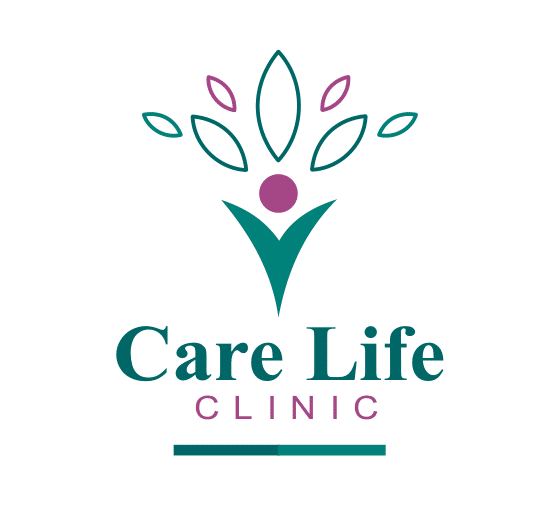Endovenous Laser Treatment
What Is Endovenous Laser Treatment?
Endovenous Laser Treatment (EVLT) is a non-surgical, outpatient laser treatment for varicose veins. It utilizes ultrasound-guided technology to precisely deliver laser energy that targets unhealthy varicosed veins and causes them to collapse. Once closed, the blood flow is naturally redirected to healthier veins.
What To Expect
After numbing your leg with a local anesthetic, the vascular specialist will insert a (less than one millimeter) laser fiber into the diseased vein under real-time ultrasound guidance. This is then followed by an application of laser energy to heat and close the malfunctioning veins, which is called vein closure. Once the diseased veins are closed, healthy veins will then take over the role of circulating blood towards the heart.
Depending on the number of diseased veins, more than one treatment may be required. The EVLT vein treatment is done in our outpatient facilities, and procedures usually take less than one hour depending on the number of veins affected.
Benefits of Endovenous Laser Treatment
Treating vein disease with EVLT offers patients numerous benefits, including a success rate of up to 98% percent, NO hospitalization, and a quick recovery with strong patient satisfaction. Other benefits include:
- Effective at eliminating painful symptoms
- Return to daily activities immediately after treatment
- Performed in an outpatient clinic
- No scarring or stitches
- Improves overall quality of life
- Decreases your risk of deep vein thrombosis (DVT)
- Much less costly than old fashioned ‘stripping surgery’
Before the EVLT procedure, many of our patients avoided activities that involved standing for long periods of time. Now, they are able to stand at work and comfortably enjoy events that require standing.
Is Laser Treatment For Varicose Veins Safe?
Endovenous laser treatment is a minimally-invasive procedure that has been proven safe and effective for treating symptoms of vein disease in the lower legs and ankles. When administered by a skilled vein specialist, laser treatment for varicose veins amounts to a far lower risk of complications compared to surgically stripping the veins.
However, there are risks associated with any medical procedure. While serious complications for EVLT are rare and the majority of patients experience no side effects, potential risks include skin burns, discoloration, nerve damage, and blood clotting. Inform your doctor if you’re pregnant, nursing, have any allergies, or are taking any medications. You can reduce your risk of certain complications by following your doctor’s activity, lifestyle, and dietary recommendations before the procedure and during recovery.
What Should I Ask My Vascular Specialist Before Choosing EVLT?
Consider asking your vein specialists the following questions:
- What results should I expect?
- What are the risks associated with treatment?
- What is the success rate of an EVLT procedure?
- How many treatments do you think I’ll need?
- How should I prepare for an EVLT procedure?
- What is the cost of the procedure?
What Happens After Your EVLT Procedure?
Recovery from an EVLT procedure is generally trouble-free. You will be encouraged to walk as much as you can the first three days after your procedure. This is to boost circulation, prevent blood clot formation, and reduce swelling during recovery. Normal discomfort in your legs may occur as tenderness, tightening, swelling, burning, and redness — but this should only be temporary.
Post-procedure discomfort can be managed with an over-the-counter pain reliever, such as ibuprofen or paracetamol, but avoid taking aspirin-based products. You also may experience bruising along the course of the treated vein, which typically resolves in one to two weeks. Pink or clear fluid may appear on your bandages during the healing process.
At-Home Care Following Laser Vein Treatment
After laser vein treatment, your health care provider may recommend the following ongoing care strategies to ensure a complete recovery:
Compression socks — Talk with your specialists about the safest and most beneficial way for you to use compression socks. Although they can be effective in aiding good circulation, compression stockings can cause irritation and discomfort if not worn properly.
Walking and exercise — You can resume daily activities immediately, but avoid standing for long periods of time, air travel, and strenuous physical exercise for two weeks. Try to walk as much as you can during the first three days after treatment. Walking 10 to 15 minutes every hour during the day can promote rapid healing.
Bathing — It’s imperative to care for the catheter insertion site as directed and keep it out of contact with water for 48 hours. Avoid soaking in bathtubs, hot tubs, and pools for seven to 10 days following the procedure. This can help reduce the risk of infection and keep the veins in your leg from dilating. After your treatment, be sure to wait at least 24 hours before showering.
When Should You Contact The Doctor After Your EVLT?
Our vein specialists will recommend scheduling a follow-up appointment within a week of EVLT to assess the progress of your treatment. Contact your doctor immediately if you experience any of the following:
- High fever
- Swelling that gets worse
- Breathing problems, such as shortness of breath or wheezing
- Severe pain that keeps you from completing your daily activities
- Signs of infection in the treated area, such as warmth, bleeding, redness, or fluid discharge
Why Are Follow-Ups Important After EVLT?
Scheduling recommended follow-up appointments after your procedure is vital to assess the progress of your treatment. During a follow-up appointment, an ultrasound will be performed to check for any problems, such as blood clots. These appointments allow your vein specialist to determine if further treatment is necessary. They are based on your personal venous condition and are intended to ensure successful long-term results.
